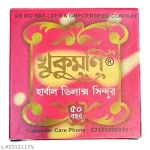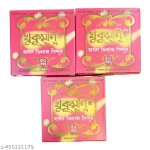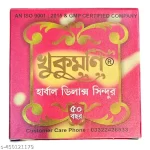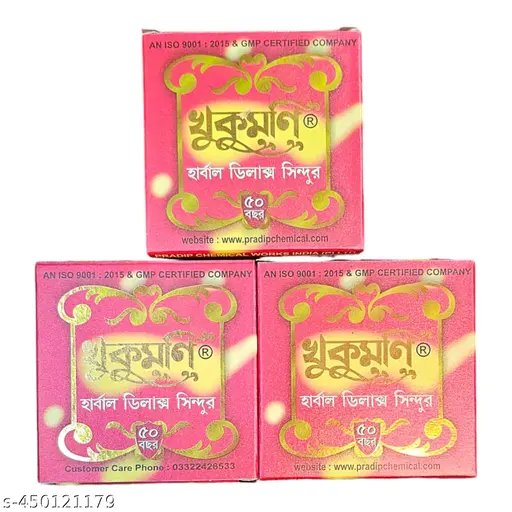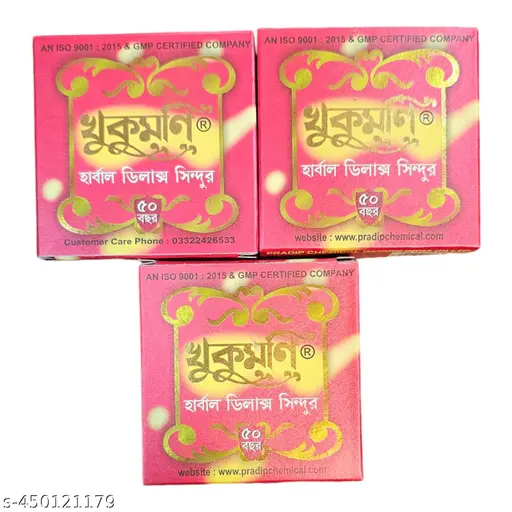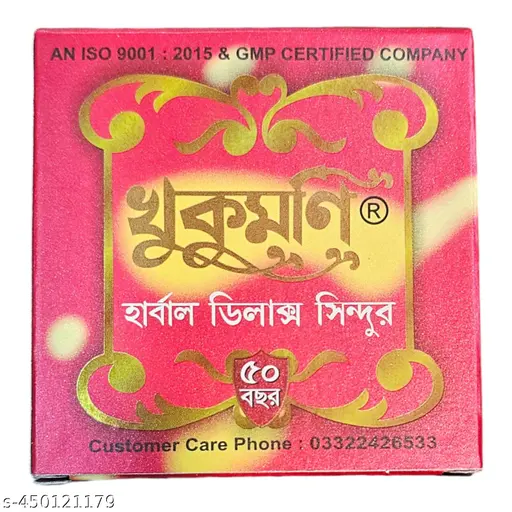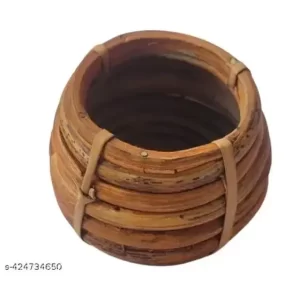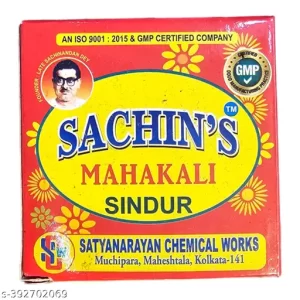KHUKUMONI CLASSIC SINDOOR (RED) | Set of 3
KHUKUMONI CLASSIC SINDOOR (RED) | Set of 3
₹399.00 Original price was: ₹399.00.₹345.00Current price is: ₹345.00.
KHUKUMONI CLASSIC SINDOOR Net Quantity (N) : 3
Capacity: 20gm
Color: Red
Water Resistant: Yes
Type: Loose Powder
KHUKUMONI CLASSIC SINDOOR is enriched with Turmeric & Sandal.. The usage of Sindur denotes that a woman is married in many Hindu communities. Sindur is traditionally applied at the beginning or completely along the parting line of a woman’s hair or as a dot on the forehead. According to the rituals of Hinduism, after marriage, women wear red vermilion on their heads. There is a ritual during the wedding, the sindoordan episode. Because vermilion is considered very sacred in Hinduism. Most practices and traditions in Sanatan Hinduism have a scientific rationale. Vermilion is mainly used by women along the straight line by braiding it in the middle of the head. According to science, vermilion contains mercury, which is good for the brahmarandhra gland. It reduces women’s stress. Blood pressure is also controlled.
Sindoor, a traditional red or orange powder, holds significant cultural and spiritual importance in various Indian communities, particularly among married women. It is primarily applied along the parting of the hair, symbolizing a woman’s marital status and her devotion to her husband. The application of Sindoor is not merely a cosmetic practice; it is deeply rooted in the customs and rituals of Hinduism, where it is believed to invoke the blessings of the goddess Parvati, the embodiment of marital bliss and fidelity. The vibrant hue of Sindoor serves as a visual representation of love, commitment, and the sacred bond of marriage, making it an essential element in wedding ceremonies and daily life.
Beyond its symbolic significance, Sindoor is also associated with various health benefits, as it is often made from natural ingredients such as turmeric and vermilion, which are believed to possess medicinal properties. The application of Sindoor is thought to enhance a woman’s aura, providing her with strength and protection against negative energies. In contemporary times, Sindoor has transcended its traditional boundaries, becoming a fashionable accessory that can be found in various forms, including liquid, powder, and even in decorative containers. This evolution reflects the enduring relevance of Sindoor in modern society, where it continues to be a cherished symbol of love, tradition, and cultural identity.
